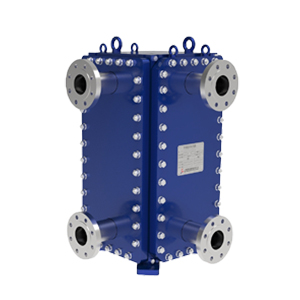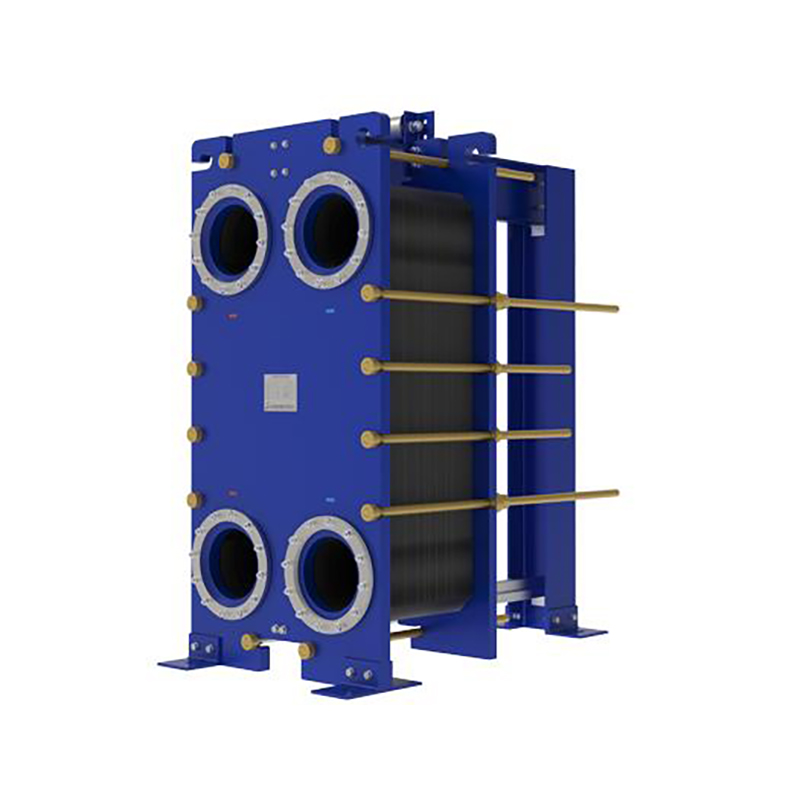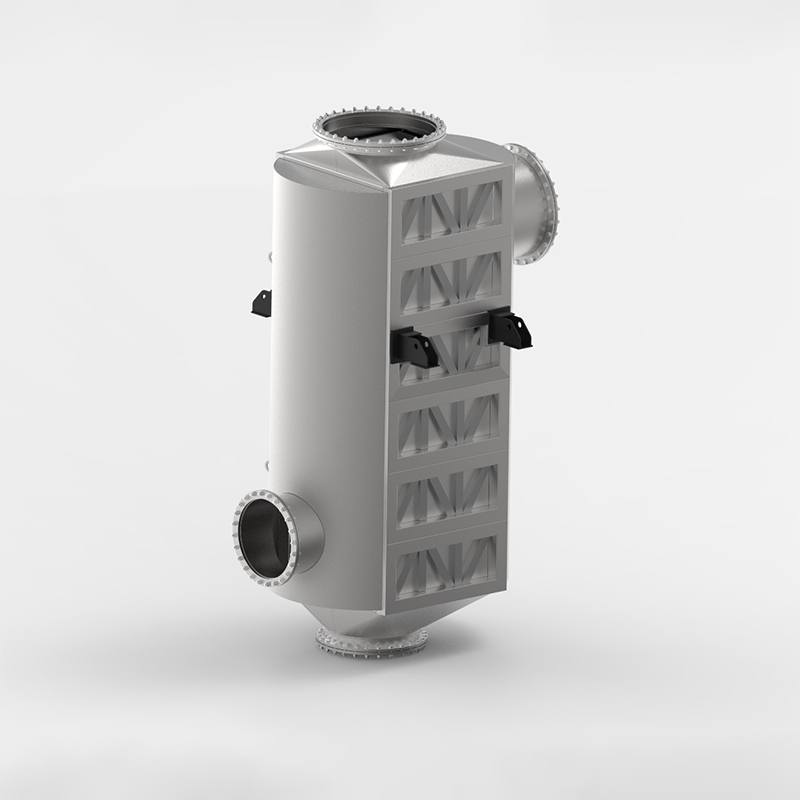5 key roles of plate heat exchanger gaskets.
Plate heat exchanger gaskets perform 5 key roles: ...
More
What is a Plate Pack Heat Exchanger?A plate pack heat exchanger, also known as a plate heat exchanger (PHE), is a compact and highly efficient device designed for transferring heat between two fluids without mixing them. It consists of multiple thin, corrugated metal plates stacked together to form a series of channels through which the hot and cold fluids flow alternately. The large surface area created by the plate corrugations maximizes heat transfer, making it ideal for applications in industries such as HVAC, chemical processing, food and beverage, and power generation. These exchangers are known for their modularity, allowing for easy expansion or reduction of capacity by adding or removing plates. Common materials include stainless steel, titanium, or other alloys to resist corrosion and handle high pressures and temperatures. With global market data indicating a compound annual growth rate (CAGR) of over 6% from 2023 to 2030, driven by energy efficiency demands, plate pack heat exchangers are increasingly preferred over shell-and-tube models due to their superior performance in space-constrained environments. They are widely used for heating, cooling, heat recovery, and condensation processes, offering precise temperature control and reduced energy consumption, which aligns with sustainability goals in modern industrial operations.
Plate pack heat exchangers operate on the principle of conductive and convective heat transfer through the plate walls, with the corrugated pattern inducing turbulent flow to enhance efficiency. This turbulence minimizes fouling and allows for close temperature approaches, often within 1-2°C, leading to energy savings of up to 30-40% compared to traditional exchangers. According to industry reports from sources like Grand View Research, the global plate heat exchanger market was valued at approximately USD 5.2 billion in 2022 and is projected to reach USD 8.3 billion by 2030, underscoring their widespread adoption. These systems are customizable based on parameters such as flow rate, temperature range (typically from -40°C to 200°C), and pressure limits (up to 25 bar for standard models), with gasketed, brazed, or welded designs to suit different fluid compatibilities and hygiene requirements. For instance, in the food industry, stainless steel plate packs ensure easy cleaning and meet sanitary standards, while in marine or harsh environments, welded versions prevent leakage. Real-world applications include district heating systems, where they achieve over 90% thermal efficiency, and industrial processes like pasteurization, where they maintain precise temperatures to ensure product quality. Their compact size—often 50-80% smaller than shell-and-tube units—reduces installation costs and space requirements, making them a cost-effective solution for both new projects and retrofits.
The advantages of plate pack heat exchangers are numerous, contributing to their dominance in thermal management applications. Key benefits include high thermal efficiency, compact design, scalability, ease of maintenance, and cost-effectiveness. These exchangers typically achieve efficiency rates of 90-95%, far exceeding the 60-70% of shell-and-tube models, due to the large surface area and turbulent flow that reduce thermal resistance. Their modular plate pack allows for simple capacity adjustments by adding or removing plates, providing flexibility for changing process demands without full system replacement. Maintenance is straightforward, as plates can be individually inspected, cleaned, or replaced, minimizing downtime—gasketed types, for example, can be disassembled in hours for cleaning, reducing operational costs. Economically, they offer lower initial investment and operating costs; energy savings from reduced pumping needs and higher efficiency can lead to payback periods of under two years in many cases. Additionally, their lightweight construction (up to 80% lighter than alternatives) cuts transportation and installation expenses. Environmental benefits are significant, with reduced carbon footprints due to lower energy consumption, aligning with regulations like the EU's Energy Efficiency Directive. From a durability perspective, materials like titanium or special alloys extend lifespan to over 20-30 years with proper care, ensuring long-term reliability in diverse industrial settings.
Plate pack heat exchangers deliver tangible advantages backed by industry data and real-world performance metrics. For thermal efficiency, tests show heat transfer coefficients of 3000-7000 W/m²K, compared to 500-1500 W/m²K for shell-and-tube types, enabling closer temperature approaches and energy savings of 30-50% in applications like HVAC systems. This efficiency is highlighted in case studies, such as those from Alfa Laval or APV, where plate exchangers reduced energy costs by up to 40% in manufacturing plants. The compact design saves up to 80% space, crucial in urban or limited-area installations, and weight reductions of 50-80% lower structural support needs. Scalability is a major advantage; for instance, in expanding dairy processing lines, adding plates can increase capacity by 20% without new unit purchases. Maintenance benefits are quantifiable: gasketed models allow for cleaning in 4-8 hours versus days for fixed-tube units, cutting downtime costs by over 50%. Cost-effectiveness is evident in life cycle analyses, where total ownership costs are 20-30% lower due to reduced energy use, minimal maintenance, and longer intervals between replacements. Environmental impact data indicates CO2 emission reductions of 15-25% per unit of heat transferred, supporting corporate sustainability reports. Furthermore, their adaptability to high-fouling fluids with self-cleaning turbulence minimizes performance degradation, ensuring consistent operation over time, as validated by user feedback and industry benchmarks from organizations like the Heat Exchange Institute.
Select the most popular foreign trade service products to meet your diverse needs
Learn more about the dynamics and professional knowledge of the foreign trade industry

Plate heat exchanger gaskets perform 5 key roles: ...
MoreAPI 662 defines standards for plate heat exchanger...
More
You can see clear differences between welded block...
More
A gasket in heat exchanger seals surfaces, blocks ...
More.jpg)
Plate air preheaters transform industrial processe...
More
Regenerative solutions, such as the Plate Air Preh...
MoreSelect the most popular foreign trade service products to meet your diverse needs
Explore more content related to foreign trade services

User Comments
Service Experience Sharing from Real Customers
Michael Reynolds
Maintenance SupervisorThis plate pack heat exchanger is incredibly robust and efficient. It was a direct replacement for our old unit and the performance upgrade was immediately noticeable. The installation was straightforward and it has required zero maintenance since commissioning six months ago. A fantastic piece of engineering.
Sarah Chen
HVAC EngineerWe integrated this plate heat exchanger into our district heating system, and the thermal efficiency is outstanding. The compact design saved us a significant amount of space compared to shell-and-tube models. The plates are well-constructed and easy to access for inspection. Highly recommended for any HVAC application.
David Rodriguez
Plant ManagerA very reliable and cost-effective solution for our cooling process. The heat transfer rates are excellent, helping us reduce our energy consumption. We deducted one star because the initial gasket seating procedure required more careful attention than anticipated. Otherwise, a solid performer.
Emily Watson
Process EngineerPrecise temperature control is critical in our pharmaceutical manufacturing, and this exchanger delivers perfectly. The ability to handle our specific temperature and pressure requirements without corrosion issues has been invaluable. The supplier provided excellent technical support during the selection process.